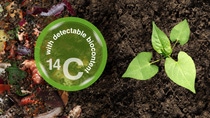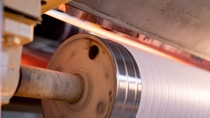Sustainability
Product Carbon Footprint
Through cradle-to-gate product carbon footprint (PCF) data, customers of BASF dispersions and construction additives have full transparency into greenhouse gas emissions for our entire portfolio of coatings, adhesives, and fiber-bonding and construction materials. Our PCF calculation is TÜV certified and follows ISO 14067 along with the Together for Sustainability methodology.
Customer benefits
- Transparency of CO2 emissions
- Certifed calculation method
- Identification of main reduction levers

The cradle-to-gate PCF covers all product-related greenhouse gas emissions until a BASF product leaves the factory gate.
Cradle-to-gate PCF
BASF's PCF data represents a cradle-to-gate product carbon footprint: it comprises all product-related greenhouse gas (GHG) emissions that occur until a BASF product leaves the factory gate, from the purchased raw material to the use of energy in production processes. To be specific, we differentiate between Scope 1 (BASF´s emissions), Scope 2 (purchased energy), and Scope 3 upstream (emissions by suppliers and generation of raw materials)*. The PCF is provided in kilos of carbon dioxide equivalents** per kilo of product (kg CO2eq/kg); our PCF data is updated regularly, at least once a year.
*These categories follow the Greenhouse Gas (GHG) Protocol, a widely recognized standard for measuring and managing greenhouse gas emissions.
**Other greenhouse gases are converted into CO2 equivalents according to the GHG Protocol.

PCF calculation: TÜV certified and following ISO 14067 along with the Together for Sustainability methodology.
Standards and certification
The method is aligned with the calculation rules of the Together for Sustainability (TfS) guideline, the chemical industry's standard for calculating product carbon footprint values. At the same time, the BASF method follows the relevant PCF standard ISO 14067:2018. Both the methodology and the digital solution have been certified by TÜV Rheinland.
Towards net zero: how to reduce your carbon footprint
As part of the European Green Deal, the European Commission aims to reduce greenhouse gas emissions in the EU to zero by 2050. The involved policies and reporting regulations lead to carbon accounting becoming an essential tool for many market players. At BASF, calculating the carbon footprint of our sales products provides us with an important starting point to reduce emissions and achieve our goal of CO2 neutrality by 2050***.
Our customers benefit by receiving reliable, high-quality PCF data that they can incorporate into their carbon accounting activities. As a next step, BASF products can help reduce GHG emissions, e.g., by switching to renewable raw materials via the biomass balance approach.
***Scope 1 (BASF operations), Scope 2 (purchased energy), and Scope 3.1 emissions (purchased goods and services).
Discover more sustainable solutions
Discover
Results: 7
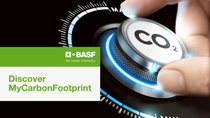
MyCarbonFootprint: Simplify your Sustainability Journey in Architectural Coatings and Construction

Access your PCF data online
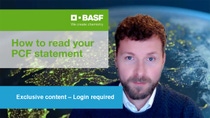
How to read your PCF statement
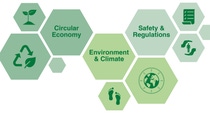
Sustainability meets Adhesives

BASF now offering its high-performance UV acrylic hotmelt acResin® with a zero product carbon footprint
Go to industries
Contact us
Not found what you were looking for? Reach out to us for assistance.
Subscribe to our News-Service
Don’t miss the latest news on web seminars, sustainability, regulatory and product innovations.
